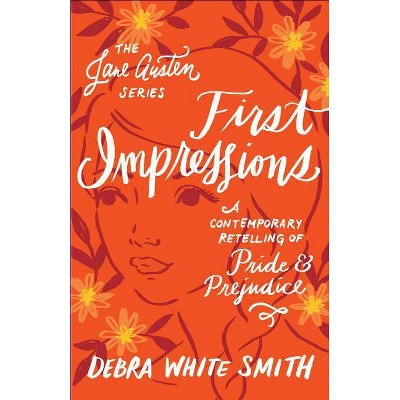Jane Jacobs's First City - by Glenna Lang (Hardcover)

Similar Products
Products of same category from the store
AllProduct info
<p/><br></br><p><b> About the Book </b></p></br></br>"The late urbanist and author Jane Jacobs's canonical work on the life and planning of great cities and on city and national economies grew from social and ethical foundations formed in her home city, Scranton, Pennsylvania. The book is a detailed portrait of Jane's early life and of the city she grew up in. It shows the development of Jane's acute observational abilities from childhood through her desire in early adulthood to understand and write about what she saw. The seeds of her ideas developed in Scranton - once the thriving anthracite-mining capital of the world - that shared many qualities with other medium-size, industrial cities of the early twentieth century. It was a place of great diversity. Small businesses flourished and a wide variety of ethnic groups, including African Americans, lived cheek by jowl. Even recent immigrants could save enough to buy a house. Quality public education was cherished and supported by all. Opposing political parties joined forces to tackle problems, newspapers gathered and reported information with a sense of civic purpose and responsibility, and citizens worked together for the public good. The book demonstrates why, at the end of Jacobs's life, her thoughts and conversations increasingly turned to Scranton and the potential for cohesion and inclusiveness held by contemporary medium-size cities"--<p/><br></br><p><b> Book Synopsis </b></p></br></br><p><b>A thorough investigation of how Jane Jacobs's ideas about the life and economy of great cities grew from her home city, Scranton</b> <p/><i>Jane Jacobs's First City </i>vividly reveals how this influential thinker and writer's classic works germinated in the once vibrant, mid-size city of Scranton, Pennsylvania, where Jane spent her initial eighteen years. In the 1920s and 1930s, Scranton was a place of enormous di-versity and opportunity. Small businesses of all kinds abounded and flourished, quality public education was available to and supported by all, and even recent immi-grants could save enough to buy a house. Opposing political parties joined forces to tackle problems, and citizens worked together for the public good. <p/>Through interviews with contemporary Scrantonians and research of historic newspapers, city directories, and vital records, author Glenna Lang has uncovered Scranton as young Jane experienced it and shows us the lasting impact of her growing up in this thriving and accessible environment. Readers can follow the development of Jane's acute observational abilities from childhood through her passion in early adulthood to understand and write about what she saw. Reflecting Jane's belief in trusting one's own direct observation above all, this volume has been richly illustrated with historic and modern color images that help bring alive a lost Scranton. The book demonstrates why, at the end of Jacobs's life, her thoughts and conversations increasingly returned to Scranton and the potential for cohesion and inclusiveness in all cities.</p><p/><br></br><p><b> Review Quotes </b></p></br></br><br>"Few would dispute that Jane Jacobs has changed the way generations see and experience cities. But no one before Glenna Lang has probed so fully where Jacobs herself gained that vision. In this beautifully composed, deeply researched, and fascinating twin portrait of Jacobs and her hometown of Scranton, Lang reveals how this medium-size city built on anthracite coal shaped an urban ideal that would ultimately reverberate worldwide."--Lizabeth Cohen, author of Saving America's Cities: Ed Logue and the Struggle to Renew Urban America in the Suburban Age<br><br>"Glenna Lang paints a compelling picture of Scranton's rich history and community-centered way of life, and how these molded Jane Jacobs's influential ideas and writing about cities. Jane Jacobs's First City illustrates Scranton as an attractive place to raise a family, make an impact in the community, and develop lifelong relationships--all of which remain true to this day, and which we continue to foster and embrace."--Paige Gebhardt Cognetti, Mayor, City of Scranton<br><br>"In your hands is a cornucopia of discoveries, one excavation after another about how and what Jane came to know about the connection between cities and the people who live in them. Here's a snapshot of five-year-old Jane Jacobs in her father's open-air car, in Scranton - Jane in a car for goodness' sake - on the street where she grew up, or a description of teenager Jane at the top of the stairs, listening to her father with his medical colleagues in the living room below, discussing the new ideas of Dr. Freud. These were secrets until Glenna Lang dug them out. What luck!"--Max Allen, Jane Jacobs's producer for the Massey Lectures on CBC Radio and editor of Ideas That Matter: The Worlds of Jane Jacobs<br><br>"Jane Jacobs's First City is a brilliant work of scholarship that convincingly shows how Jane Jacobs's canonical works developed in the historic, mid-sized city of Scranton. It is clearly a labor of love, of great dedication, and filled with appreciation for all of its subjects, not only Jane Butzner [Jacobs]. The overwhelmingly new material, brilliantly contextualized, will have a lasting impact."--Peter Laurence, Clemson University, author of Becoming Jane Jacobs<br><br>"This book is well written and wise. I felt a nostalgic yearning for a Scranton of this era, which is the America that produced my mother's side of the family. It restores and presents Scranton in all its subdued glory with ordinary men, women, and children going about their daily business, creating, as though Muybridge had photographed it, the mosaic of Scranton life, with its resplendent color and texture, so deeply American. We need to think about what this means to us, especially at the present moment."--Chandos Brown, Professor of History and American Studies, College of William and Mary<br><br>"A fascinating and wonderfully written book that shows how Scranton played an enormous role in shaping Jane Jacobs's thinking about urban life. It reframes not only who Jacobs was, but also what Scranton was in the early 20th-century."--Mark Hirsch, senior historian at the National Museum of the American Indian, Smithsonian Institution<br><p/><br></br><p><b> About the Author </b></p></br></br>Author Glenna Lang's previous work about Jane Jacobs--Genius of Common Sense: The Story of Jane Jacobs and "The Death and Life of Great American Cities"--aimed to inspire young adults but appealed to all ages in the general public and at universities. It was chosen as a 2009 Notable Book by both the New York Times and Smithsonian Magazine. As an illustrator, she produced four classic poems as picture books for children with David R. Godine, Publisher. Lang wrote and illustrated Looking Out for Sarah, about a day in the life of a seeing-eye dog, which won the American Library Association's Schneider Family Award. Although she grew up mainly in New York City, she has lived for many years in Cambridge, Massachusetts, and teaches at the School of the Museum of Fine Arts, now part of Tufts University. She has loved spending time in Scranton with her husband, Alexander von Hoffman, and their dog, Easy.
Price History
Cheapest price in the interval: 39.99 on October 22, 2021
Most expensive price in the interval: 39.99 on November 8, 2021
Price Archive shows prices from various stores, lets you see history and find the cheapest. There is no actual sale on the website. For all support, inquiry and suggestion messages communication@pricearchive.us




















